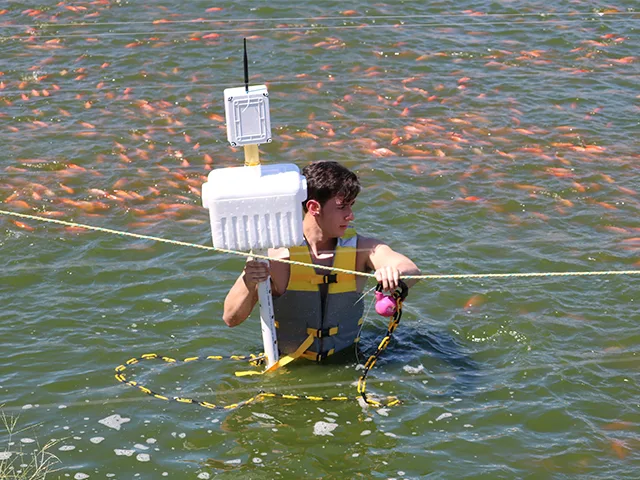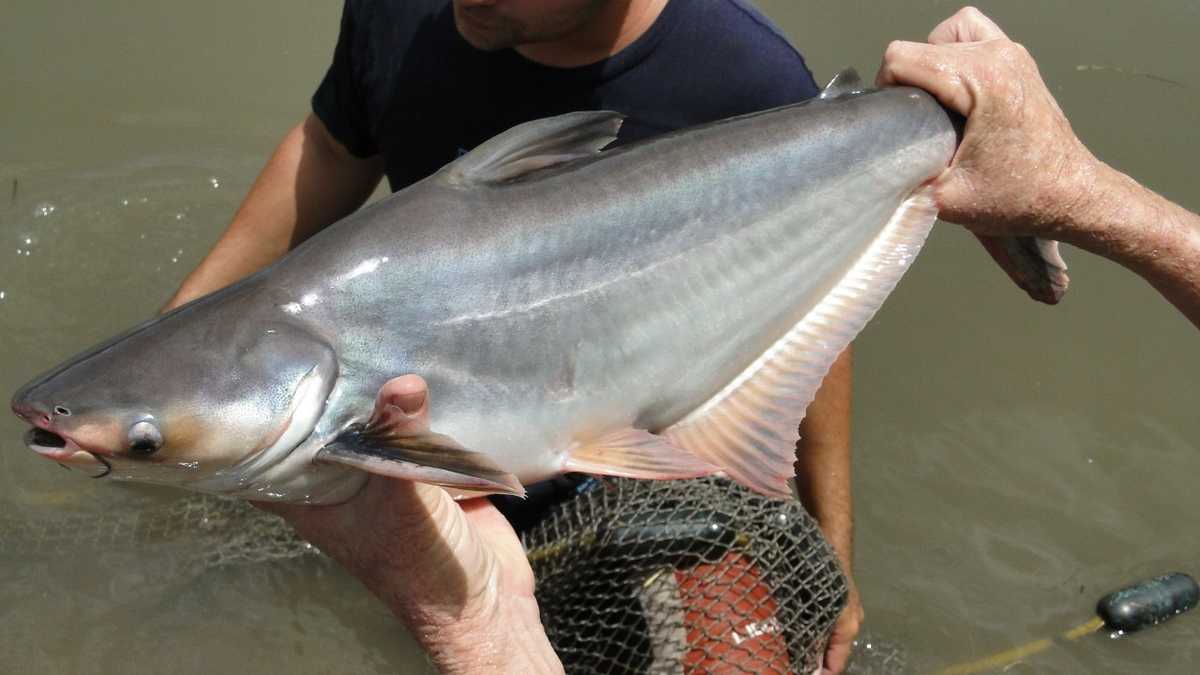Although Colombians have increased the consumption of this species by 15,000 tons, its production in the country continues to confront fish farmers and environmentalists. In Huila, leaders of the sector request to review the issue to see the feasibility in the department.
Diary of Huila, economy
By: Gloria Camargo
In Colombia, the department of Huila continues to be a benchmark in fish production, with 40% of the national total, that is, with close to 80,000 tons for the year 2022, mainly in tilapia, however, producers point out that the growth could be elderly.
This, if in the country, the production of the basal fish, or Pangasius hypophthalmus, were given a free footing, which is prohibited as it is called an invasive species.
regional position
Figures not updated since 2021 by the National Aquaculture and Fisheries Authority, Aunap, the country imports about 80,000 tons of fish per year, which is brought mainly from countries such as Vietnam, Ecuador, Chile, China, Uruguay and Argentina. .
Meanwhile, the Ministry of Agriculture pointed out that “75% of the fish imports made by Colombia represent 29% of the national demand. In addition, the main fishery products that are imported are basa from Vietnam, salmon from Chile, hake and squid from Peru, and cojinúa and horse mackerel from Mexico.”
In this regard, Álvaro Alfonso Méndez Rojas, president of the Board of Directors of the Cooperativa Multiactiva de Piscicultores del Huila, pointed out that “Colombia produces about 110,000 tons of fish, but 80,000 tons are imported for domestic consumption. It does not mean that these imports are currently affecting us in terms of what we produce.”
And he added in reference to what happens with the basa, is that this is “a species that imports frozen fillet-type modality from Asia. According to some studies, it is a fish that comes with high levels of contamination, but that are allowed by Invima, which is the entity that controls that, but they are not at the toxic limit for human consumption.
“In that order of ideas, this fish is not native to Colombia and that is why cultivating it is illegal, but it is very well accepted for human consumption. It has also been established that its production is more economical because it grows faster and it is a species that, if it were to be legalized, would give the possibility to white or striped catfish, which are well extinct, to develop,” he said, while who added that its consumption would be replaced by Pangasiushypophthalmus.
“It would simply be replaced, so our species would have greater possibilities of subsistence in our rivers, in addition to less environmental damage,” he pointed out.

With reference to the environmental studies that have been carried out previously in the country, he indicated that “from the ‘Alexander von Humboldt’ Biological Resources Research Institute, many people say that if the production of this species is authorized in Colombia, the environmental impact will be negative and some species will disappear from the rivers”.
According to Méndez Rojas, in the country and in the department, where judicial actions have been taken to seize this fish, it is known that for 14 years, when the basa was introduced, some people have cultivated it without this having generated an impact. bad for the ecosystem.
“We are involved in a strange film, surely favoring the importers of this product, when it can be produced here and, who could produce it? Well, small fish farmers”, he established.
Among the main characteristics for the stocking of this fish, the representative pointed out that “it is a fish that is cheaper to produce because it requires less energy because it has the advantage that it breathes and takes oxygen from the environment, (tilapia takes it from the water) , that is, it does not require aerators to be incorporating oxygen into the water. Second, we have not seen that it is a predatory species, there have been known cases where they are farmed with red tilapia, with cachama and it has been established that the tarpon eats the basa.
Moreover, it does not reproduce in the environment, it reproduces in captivity. One goes to Magdalena Medio to ask, why por there in that area of Tolima and Antioquia, they are large producers of this type of fish, and in the ‘leaks’ that must reach Barrancabermeja there are no bases”, he said.
Finally, it established that for now, what is sought from the productive sector is for the National Government to re-evaluate this prohibition, “taking into account the real situation, because we cannot continue working with economic interests based on assumptions that are contrary to reality. ”.
Profitability and consumption
A panorama that adds to the debate that has been generated with more force in recent months in the country, while authorities seize farms of this species in departments such as Caquetá, Cauca and Huila.
However, producers see in this species an opportunity to obtain better profitability given the increase in the cost of concentrates, which increased by 32% in 2022, according to the Society of Colombian Farmers.
On the other hand, the Colombian Federation of Aquaculture Farmers, Fedeacua, indicated that there are several benefits that must be taken into account in order to “help food security and reduce informality.”
César Pinzón, president of the entity, stressed that “to produce 1 kilo of tilapia, $10,000 is needed, while for 1 kilo of basa fish it costs approximately $4,125.” Despite the ban on it, the production of basa fish reached 15,000 tons in 2022.

Environmental impact
Carlos A. Lasso Alcalá, PhD in biological sciences and senior researcher at the Humboldt Institute, who is in the middle of the debate, indicated that the country should open the debate again, because “the basa is going to achieve trout production, because its cultivation is becoming more widespread”, emphasizing that “domestication would have a greater impact on the environment if it continues to be cultivated irregularly”.
A position that shows a change of position of the entity, since on several occasions it has indicated that “the consequences of the introduction of the fish are uncertain for the ichthyofauna and regional aquatic ecosystems due, among other factors, to existing information gaps.”
According to his technical concept on the level of risk of the species for fish and freshwater aquatic ecosystems in the country and whose results were included in the IV Catalog of Aquatic Biodiversity, Humboldt classified “the species as high risk after a protocol of risk analysis and check its reproduction for commercial purposes. This is an illegal activity because in Colombia only the importation of fillet-based fish for mass consumption is authorized.”
For this reason, throughout the country, the Alexander von Humboldt Institute, attached to the Ministry of Environment and Sustainable Development, has categorized it as an invasive species and therefore its free introduction is not allowed.
Why the controversy?
The Pangasianodonhypophthalmus belongs to the Pangasiidae family and can reach up to 1.3 m in length and weigh up to 44 kg.
This fish is a freshwater species, which inhabits tropical aquatic environments with temperatures that fluctuate between 22°C – 26°C and with pH ranges between 6.5 – 7.5 (5). Its original name is Sutchii panga, known in Colombia as Basa or Stripedcatfish in English.

According to the National University of Colombia, their diet is omnivorous, feeding on both fish, crustaceans and plant remains.
It should be further noted that “captive females take up to three years to reach sexual maturity (over 3 kg in weight), while males often mature in their second year. A 10 kg female can lay more than 1 million eggs. Wild spawners generally spawn twice a year, but cage spawning in Vietnam has been recorded 6 to 17 weeks after the first.”
The basa is a highly migratory species that makes long-distance movements over hundreds of kilometers upstream in search of refuge, and then returns downstream to spawning, feeding, and nursery habitats. And globally, it is caught by artisanal fisheries, and has been introduced for this purpose in many Asian countries such as Bangladesh, China, India, Indonesia, Malaysia, and Myanmar.
